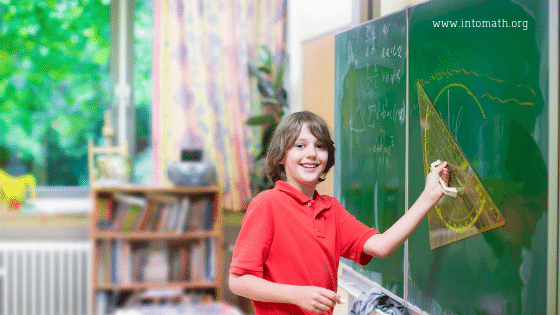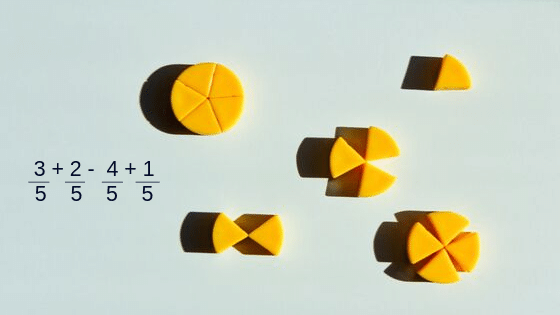Math is the subject that has been studied for centuries using a variety of approaches.
Children start making sense of certain math concepts as soon as they are able to explore and talk. According to Amanda Morin babies under the age of one are able to classify things in simple ways, understand relative size and understand words that describe quantities.
As the kids grow older understanding that math is all around us comes naturally in the process of playing with blocks or comparing items or seeing patterns. However, eventually a point is reached, when children are not able to intuitively explain the processes in such a way, that would help them apply their theories to a similar situation and this is when formal instruction and modeling of fundamental math are being introduced.
In junior grades (when children are between 8 and 11 years of age) math instruction and math discussions should involve combinations of algebra and real world applications. This is the time when students start to really make that connection between the math they do in class and how it is applicable to certain situations in real life.
It is a dangerous path, though, to completely follow the junior students’ natural desire to be active and explore rather than stay focused for some periods of time and trying to really understand the founding principles of the concepts that they are observing and experimenting with.
At the age of 8 – 9, students are able to effectively follow instructions and get involved in concrete problem solving. They are also quite open to constructive criticism from others and are able to use the feedback to improve their performance independently.
Junior learner combines physical and mental energy with creativity and ability to focus for longer periods of time. This gives teachers an opportunity to balance instruction, offering repetitive practice and memorization of the fundamental concepts in combination with extending them to more complex and challenging situations.
Here is the info graphic that explains what the identity of a junior learner is, prepared by IntoMath.

In junior grades, mathematical concepts studied usually involve operations with natural numbers, investigating proportions, using different types of clocks to tell the time and calculate the cost of something. Students also discover the properties of a number of geometric shapes and explore relations between given quantities, as well as compare fractions and decimals.
How math is presented in junior grades and how proficient students end up being by the middle school with what they should be able to do helps build the foundation for the future. Especially for high school mathematics, where operations with numbers in different systems, order of operations, linear relations and solving equations are being used every day to solve complex mathematical problems.
Both educators and parents can help children develop a strong mathematical foundation in junior years of school. Resources are abundant. From hands-on tutorials to online games and online math practice, to accelerated courses, targeting core concepts, offered by IntoMath.
To help students grasp and master the idea of money, for example, they should first be taught what dollars and cents are and how they are related. Then it would make sense to give the kids examples of how the money is being used in real life, showing the videos and letting them play some free math games involving money. Next, students can work on a project where they are a business owner or a customer, looking to make the most money or get the best deal. This could be done in the form of acting and even arranging a field trip to the store and talking to the actual business owner. Following that, a good consolidation should follow and students should do some money math worksheet practice, so that a supervising adult could assess the progress and pick up on possible gaps that still need to be filled. Keen students can be challenged more with extensions and additional thinking activities.
Fractions are the most challenging topic for both teachers, parents and students when it comes to junior grades math.
According to the Results of Collaborative Action Research on Fractions (2011-2012) many teachers face several dilemmas when it comes to teaching fractions, from explaining to their students why fractions are important to finding the perfectly balanced way in order to help students understand fractions.
The process of learning fractions definitely needs to include both modeling and an algebraic method of working with fractions as soon as students start looking at fractions in a more meaningful way. Using number lines and pizzas to help students investigate fractions is a great idea. However, these approaches need to go hand in hand with how to add/subtract multiply/divide fractions on paper/tablet algebraically, so that later students can extend the concept of fractions to more complex problems (rational functions, etc.). Fortunately, junior learners’ brains are well equipped with an “intake and retain” mechanism in many different formats, thus making it easier to ensure that kids can make a solid connection between models, hands-on learning and algebraic representations of the same processes.
Throughout junior grades, students demonstrate an interest in making connections between various things around them. Thus, it makes sense to connect what students learn in math class to other subjects. Practicing mathematics (problem solving, memorizing facts and determining patterns, understanding geometric relations) helps students observe similar processes in other areas, such as science or music.
Kids in junior grades are also quite competitive, so it is definitely a good idea to give them an opportunity to participate in math competitions and challenges.
Teaching students correct mathematical language and terminology, as well as regularly asking them a variety of questions as early as junior grades will equip them with the necessary tools for the future. Both teachers and parents can use and encourage a student to use the following vocabulary:
observe
evaluate
decide
conclude
notice
summarize
identify
infer
remember
visualize (“see”)
compare
relate
contrast
differ
predict
consider
interpret
distinguish
explain
describe
In general, it is important to remember that between the ages 8-11 children’ development is fascinating and their abilities are almost unlimited. They are caring and reflecting, able to analyze and make conclusions. Junior students are creative and are eager to take conscious risks when it comes to learning. They are informed and very inquisitive, able to apply their knowledge to a variety of situations and wider concepts. Junior learners are independent and resilient, while enjoying being a part of the group and engaging with the world and people around them.
Junior grades are the best time to help students develop a strong foundation in mathematics while connecting it to real world situations and expanding their knowledge to broader and more challenging concepts.

